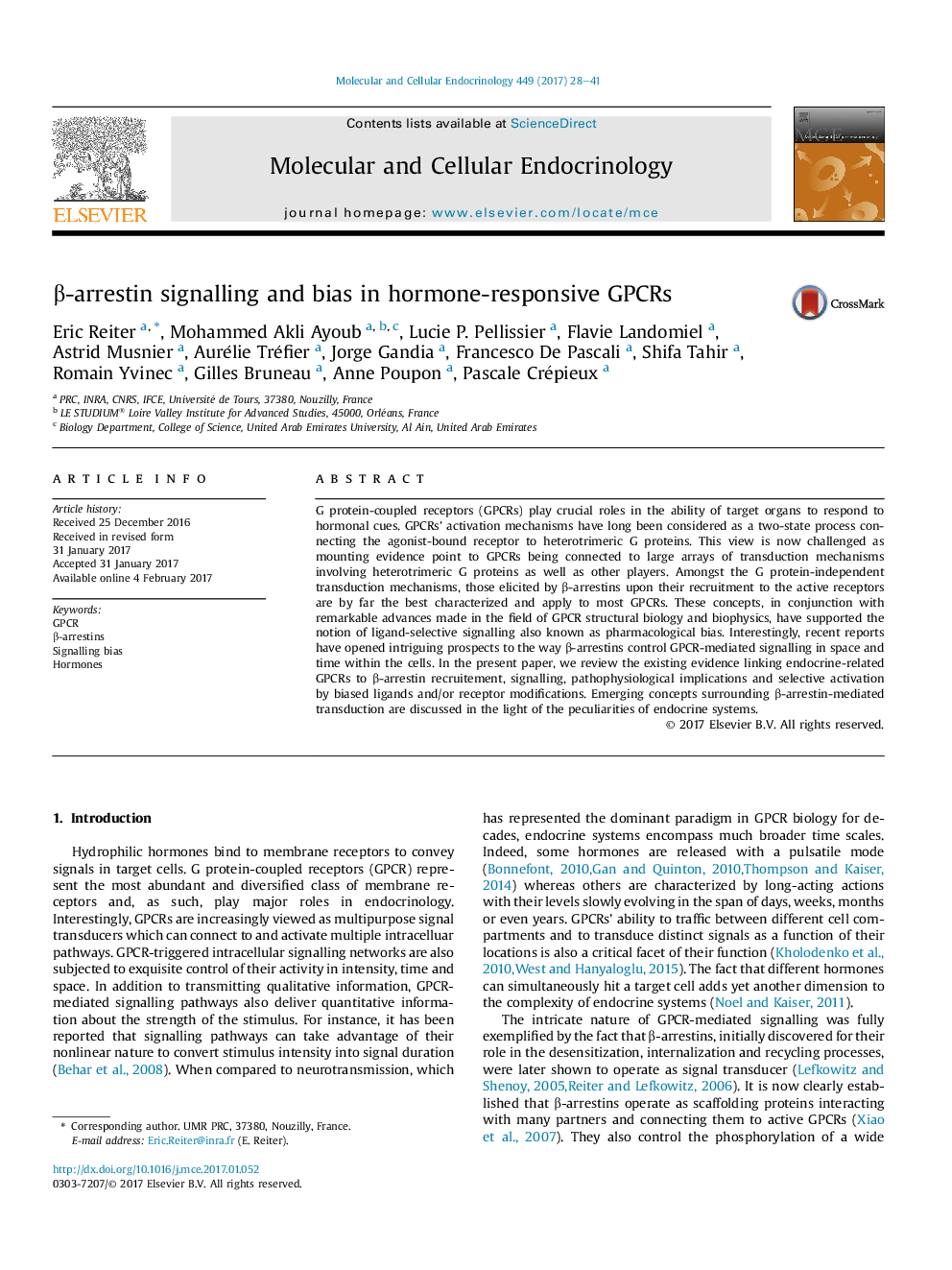| Article ID | Journal | Published Year | Pages | File Type |
|---|---|---|---|---|
| 5534066 | Molecular and Cellular Endocrinology | 2017 | 14 Pages |
â¢Î²-arrestins affect all the facets of GPCRs signalling, not just desensitization.â¢Î²-arrestins are recruited to most hormone-responsive GPCR classes.â¢Î²-arrestins control GPCR-mediated signals in intensity, time and space.â¢There is a close connection between β-arrestin signalling and biased pharmacology.â¢The understanding of β-arrestin-dependent mechanisms is rapidly evolving.
G protein-coupled receptors (GPCRs) play crucial roles in the ability of target organs to respond to hormonal cues. GPCRs' activation mechanisms have long been considered as a two-state process connecting the agonist-bound receptor to heterotrimeric G proteins. This view is now challenged as mounting evidence point to GPCRs being connected to large arrays of transduction mechanisms involving heterotrimeric G proteins as well as other players. Amongst the G protein-independent transduction mechanisms, those elicited by β-arrestins upon their recruitment to the active receptors are by far the best characterized and apply to most GPCRs. These concepts, in conjunction with remarkable advances made in the field of GPCR structural biology and biophysics, have supported the notion of ligand-selective signalling also known as pharmacological bias. Interestingly, recent reports have opened intriguing prospects to the way β-arrestins control GPCR-mediated signalling in space and time within the cells. In the present paper, we review the existing evidence linking endocrine-related GPCRs to β-arrestin recruitement, signalling, pathophysiological implications and selective activation by biased ligands and/or receptor modifications. Emerging concepts surrounding β-arrestin-mediated transduction are discussed in the light of the peculiarities of endocrine systems.
